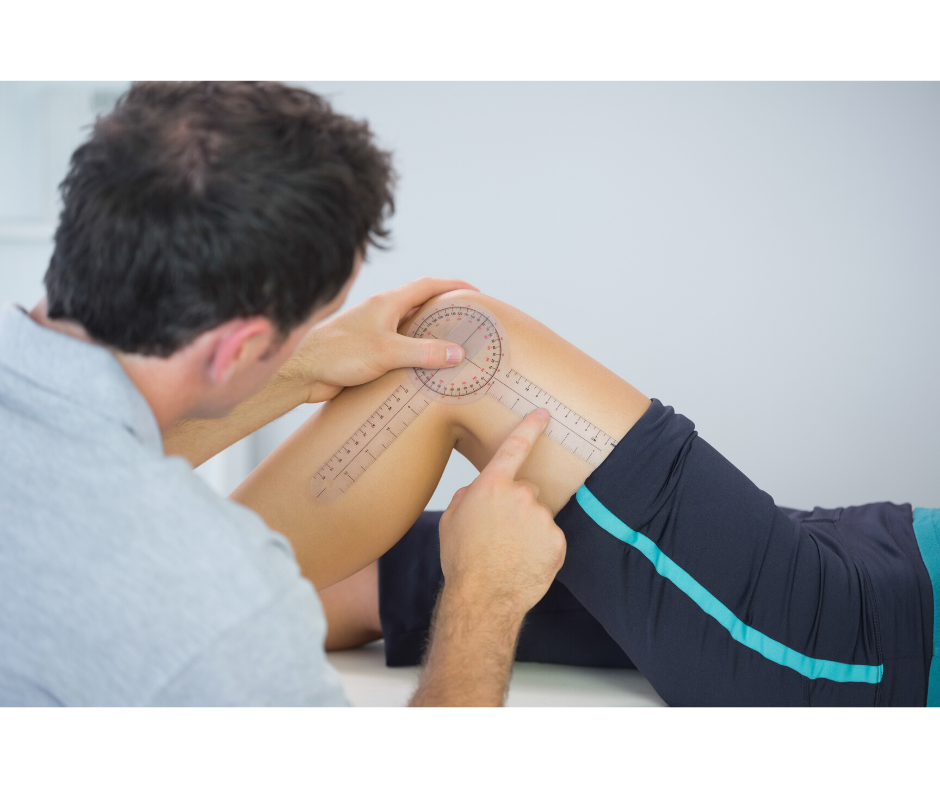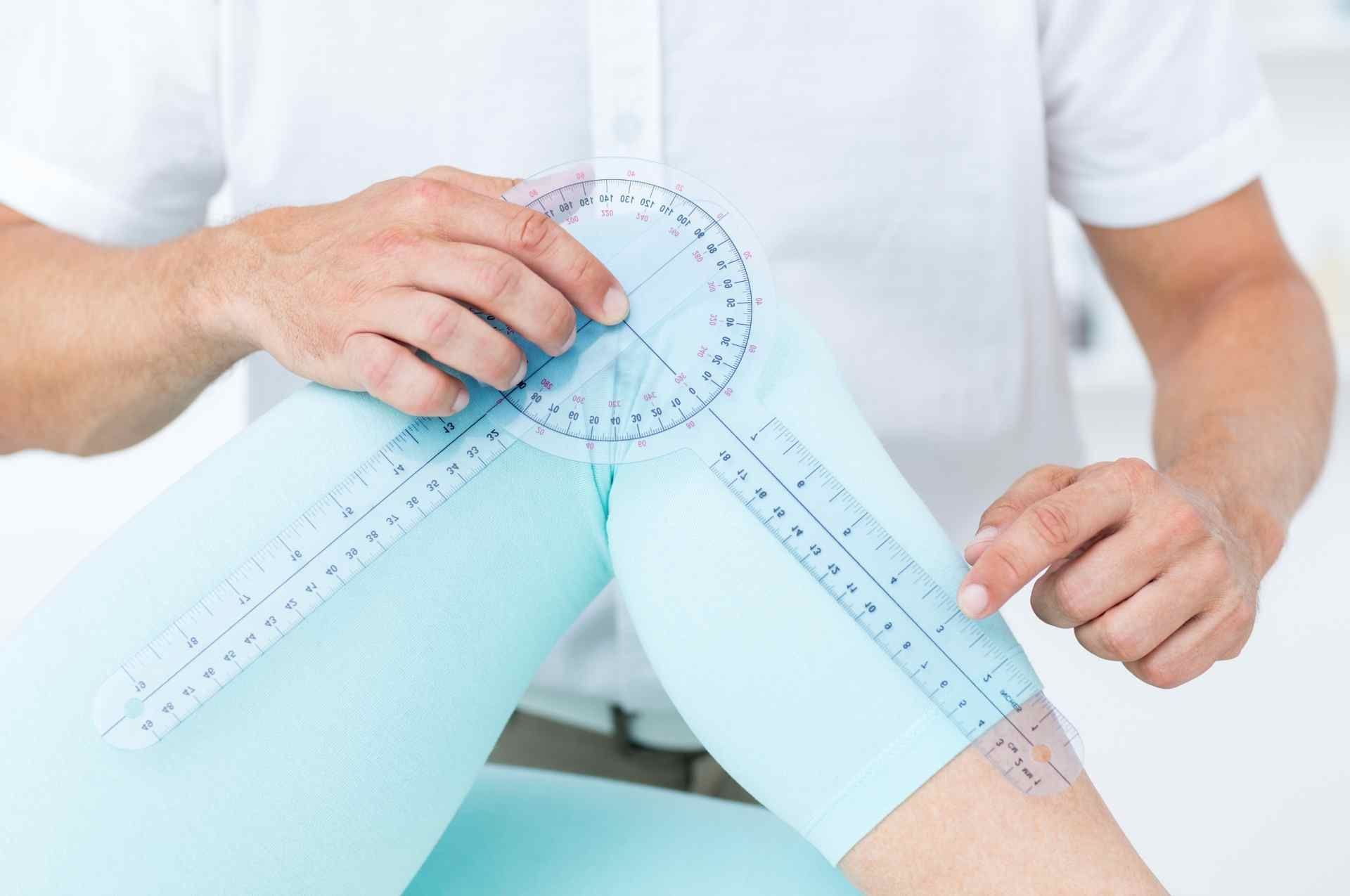What is Range of Motion?
Range of Motion (ROM) is a term that physical therapists and other health professionals use to describe how much someone can move one of their joints. This amount of movement can change based on how the tissues (muscles, ligaments, cartilage, fluid) that surround your joint are behaving.
When you ride a bicycle, go for a walk, or kick a soccer ball, there are two main movements your knee performs: you can bend your knee (known as flexion) and straighten your knee (known as extension).
Physical Therapists will often measure your range of motion in degrees, and may compare it to the average amount of movement that most healthy individuals have. Having an optimal range of motion gives your joint a greater chance to be a strong performer in your daily activities.

On average, most individuals have around 0 degrees of knee extension (a fully straightened knee) and 135 degrees of knee flexion. [1] This can vary based on how tall you are and how big your muscles surrounding your knee are.
Why is Range of Motion Important Following My Knee Replacement?
Swelling, weakness, pain, and fear of movement are all common following your knee surgery and may all contribute to less motion in your knee. Your knee will likely feel stiff and be unable to move as much as your uninjured knee. Throughout your recovery, one of your main goals will be to regain as much of your flexion and extension range of motion as possible.
The amount of movement in your knee during your recovery will determine the types of activities you are able to do after surgery! While full knee flexion or bending is not required for all activities, a research study shows that a minimum of 110 degrees of active knee flexion (bending your knee without the help of your therapist) is ideal for walking, climbing stairs, and getting up from sitting to standing. [2]
If you are preparing for an upcoming knee replacement surgery, or have already begun your rehabilitation journey, check out our physical therapy app available on Apple and Android devices specifically for knee replacement recovery. The Curovate app can assist in your recovery with a personalized rehabilitation protocol developed by a licensed physical therapist.
Stay tuned for our upcoming blogs in this series, which will investigate how to improve your knee movements, how to measure your range of motion using our app, and how accurate this measure is!
If you need further customized assistance during your surgery or injury recovery check out our Virtual Physical Therapy page to book your 1-on-1 video session with a physical therapist.
 |
 |
|---|
Other recommended blogs
- How can I accurately measure my knee range of motion with Curovate?
- How does measuring knee range of motion with Curovate compare to a physical therapist?
- How to measure your hip range of motion using Curovate
References
Magee, D. J. (2014). Orthopedic Physical Assessment. St. Louis, MO: Elsevier Saunders. ↩︎
Rowe PJ, Myles CM, Walker C, Nutton R. Knee joint kinematics in gait and other functional activities measured using flexible electrogoniometry: how much knee motion is sufficient for normal daily life?. Gait Posture. 2000;12(2):143-155. doi:10.1016/s0966-6362(00)00060-6 ↩︎







